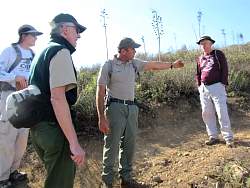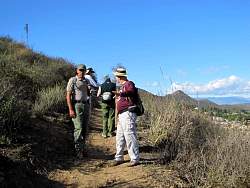 |
On the afternoon of Monday (Day 1), we head up the Potrero Ridge trail off of Reino Road to evaluate it for maintenance needs
|
|
 |
COSCA Ranger Bruce explains that the slough should be cleared out from the uphill side of the trail
|
|
 |
The outside of the trail has fallen away here
|
|
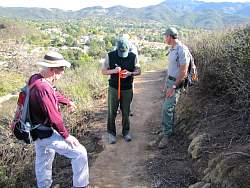 |
Marking the flagging tape that will show where repairs need to be made
|
|
|
|
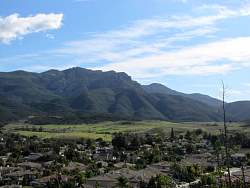 |
Conejo Mountain is to the south of us
|
|
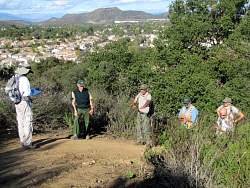 |
Evaluating a switchback
|
|
 |
Our instructor, Frank Padilla, is going to show us how to make a rolling dip, also known as a grade dip. The rolling dip will keep rainwater from running down the middle of the trail and creating a rut.
|
|
 |
You start by scratching out the lower boundary
|
|
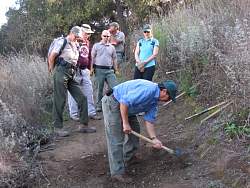 |
Next you dig out the dip that will channel water off the trail
|
|
|
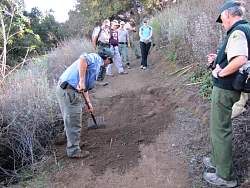 |
Use a Macleod to move the dirt around a build up a small berm downhill of the new hollow in the trail
|
|
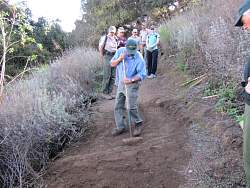 |
Finally, pack it all down
|
|
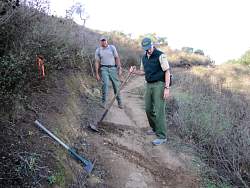 |
Now the students build their own grade dips.
|
|
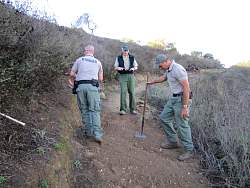 |
This one is nearly finished
|
|
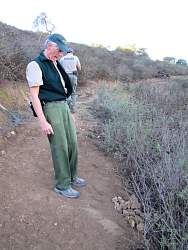 |
Rocks in the spillway keep the water from gouging out a big rut and encroaching on the trail
|
|
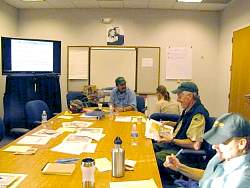 |
Back in the meeting room to wrap up Day 1
|
|
 |
Tuesday, Day 2. We practice the safety talks we learned earlier in the morning. This is Ranger Blair
|
|
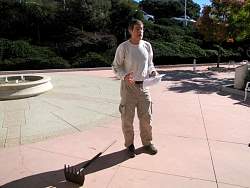 |
Steve, a CORBA and COSTAC volunteer, practices his safety talk
|
|
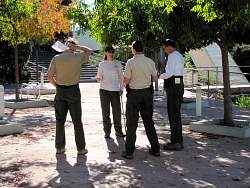 |
Shelly, a COSCA manager, practices her safety talk
|
|
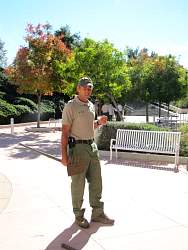 |
Ranger Bruce wings his safety talk
|
|
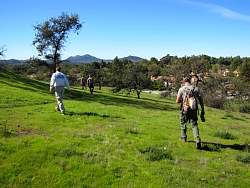 |
After learning about the clinometer (an instrument to measure the grade of the slope), we head outside to practice with them
|
|
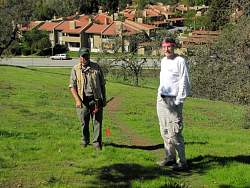 |
The bright ribbon is used to help the clinometer user (clinometrist?) to measure the grade
|
|




